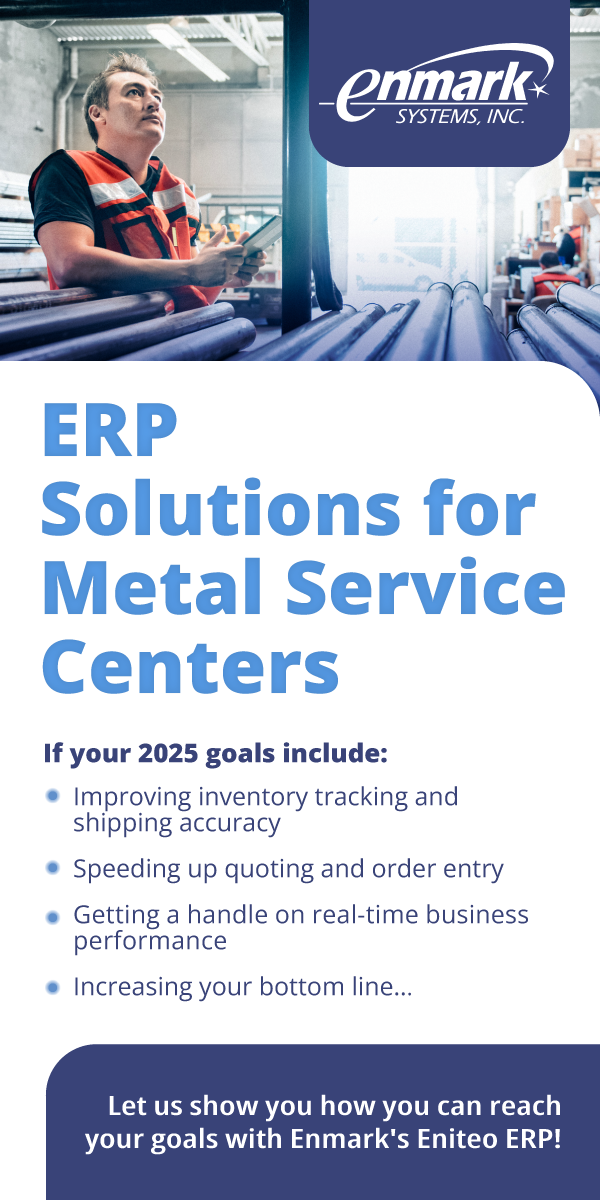The steel industry stands at the precipice of a digital revolution, where Steel AI Technology is fundamentally transforming how we approach manufacturing, quality control, and operational efficiency. This comprehensive guide explores the cutting-edge applications of artificial intelligence in steel production, with particular emphasis on open source technologies that are democratizing access to advanced manufacturing capabilities.
Introduction to Steel AI Technology
Steel AI Technology represents the convergence of artificial intelligence, machine learning, and traditional steel manufacturing processes. This integration is reshaping the industry by enabling unprecedented levels of automation, precision, and efficiency. From predictive maintenance to quality control, AI applications are addressing longstanding challenges while opening new possibilities for innovation.
The steel industry has traditionally been characterized by its reliance on human expertise and manual processes. However, the emergence of AI technologies has created opportunities to enhance human capabilities while reducing errors and improving safety. Machine learning algorithms can now analyze vast amounts of production data to identify patterns, predict equipment failures, and optimize manufacturing processes in real-time.
Modern steel plants generate enormous quantities of data from sensors, equipment monitoring systems, and production processes. This data, when properly harnessed through AI technologies, becomes a powerful tool for driving operational excellence and competitive advantage.
Google Open Source Technologies Transforming Steel Manufacturing
TensorFlow: The Foundation of Steel AI Technology
TensorFlow stands as one of the most significant open source contributions to Steel AI Technology. This powerful machine learning framework enables steel manufacturers to develop sophisticated AI models for various applications including predictive maintenance, quality control, and production optimization.
Steel companies leverage TensorFlow to build custom neural networks that can analyze sensor data from blast furnaces, rolling mills, and other critical equipment. The framework’s ability to process both structured and unstructured data makes it particularly valuable for steel manufacturing applications where data comes from diverse sources including temperature sensors, pressure gauges, and visual inspection systems.
The flexibility of TensorFlow allows steel manufacturers to deploy AI models across different platforms, from edge devices on the factory floor to cloud-based analytics systems. This versatility is crucial for steel plants that need to integrate AI capabilities into existing industrial control systems while maintaining real-time performance requirements.
Kubernetes: Orchestrating Steel Manufacturing Operations
Kubernetes, originally developed by Google and now maintained by the Cloud Native Computing Foundation, plays a crucial role in modernizing steel manufacturing IT infrastructure. This container orchestration platform enables steel companies to deploy and manage AI applications at scale while ensuring high availability and resilience.
Steel manufacturers use Kubernetes to manage complex AI workloads that require significant computational resources. For example, computer vision systems for defect detection or predictive maintenance algorithms that process continuous streams of sensor data can be deployed and scaled automatically based on demand.
The platform’s ability to handle both stateful and stateless applications makes it ideal for steel manufacturing environments where some processes require persistent data storage while others can operate as ephemeral services. This flexibility allows steel companies to optimize resource utilization and reduce operational costs.
Go Programming Language: Building Robust Steel Industry Solutions
Go (Golang) has emerged as a preferred programming language for developing high-performance backend systems in the steel industry. Its efficiency, scalability, and excellent concurrency support make it particularly suitable for building reliable industrial automation systems and data processing pipelines.
Steel manufacturers use Go to develop middleware systems that connect various industrial protocols and data sources. The language’s compiled nature ensures optimal performance when processing real-time data from steel production processes, while its built-in concurrency features enable efficient handling of multiple data streams simultaneously.
The simplicity and reliability of Go make it an excellent choice for building industrial IoT applications that need to operate continuously in harsh manufacturing environments. Steel plants can deploy Go-based applications for equipment monitoring, data collection, and process control with confidence in their stability and performance.
Artificial Intelligence Applications in Steel Manufacturing
Predictive Maintenance Revolution
Predictive maintenance represents one of the most impactful applications of Steel AI Technology. By leveraging machine learning algorithms and sensor data, steel manufacturers can predict equipment failures before they occur, dramatically reducing downtime and maintenance costs.
Modern steel plants deploy IoT sensors throughout their facilities to monitor critical parameters such as vibration, temperature, pressure, and acoustic signatures. AI algorithms analyze this continuous stream of data to identify patterns that indicate impending equipment failures. This approach allows maintenance teams to schedule repairs during planned downtime, avoiding costly unplanned shutdowns.
ArcelorMittal, one of the world’s leading steel producers, has successfully implemented AI-powered predictive maintenance systems across their global operations. Their Sentinel platform uses machine learning models to predict motor and hydraulic actuator failures with 100% success rate in pilot implementations, resulting in near-zero equipment failures and significant cost savings.
Computer Vision for Quality Control
Computer vision technology has revolutionized quality control in steel manufacturing by enabling automated defect detection with superhuman accuracy. AI-powered systems can identify microscopic defects, surface irregularities, and dimensional variations that would be impossible for human inspectors to detect consistently.
Steel manufacturers deploy high-resolution cameras and advanced image processing algorithms throughout their production lines to monitor product quality in real-time. These systems can detect various types of defects including cracks, inclusions, surface scratches, and dimensional deviations with remarkable precision.
The implementation of computer vision systems has resulted in significant improvements in product quality and reduction in waste. Companies report detection accuracy rates exceeding 98%, compared to 85% with traditional manual inspection methods. This improvement translates to substantial cost savings through reduced material waste and improved customer satisfaction.
Process Optimization Through Machine Learning
Machine learning algorithms are transforming steel production by optimizing complex manufacturing processes in real-time. These systems analyze vast amounts of historical and real-time data to identify optimal operating parameters for furnaces, rolling mills, and other critical equipment.
Steel plants use AI to optimize everything from raw material composition to furnace temperature profiles and rolling schedules. Machine learning models can predict the impact of parameter changes on final product quality, enabling operators to make informed decisions that maximize yield while maintaining quality standards.
The optimization capabilities of AI extend beyond individual processes to encompass entire production workflows. Advanced scheduling algorithms, inspired by biological systems like ant colonies, can optimize production sequences to minimize changeover times, reduce energy consumption, and maximize throughput.
Digital Transformation and Industry 4.0
IoT Integration in Steel Manufacturing
The Internet of Things (IoT) serves as the foundation for Steel AI Technology by providing the data infrastructure necessary for intelligent manufacturing systems. Steel plants deploy thousands of sensors throughout their facilities to monitor equipment performance, environmental conditions, and product quality.
IoT-enabled systems collect data on parameters such as temperature, pressure, vibration, chemical composition, and energy consumption. This data is then transmitted to AI analytics platforms where machine learning algorithms can identify patterns, detect anomalies, and optimize operations in real-time.
The integration of IoT and AI has enabled steel manufacturers to achieve unprecedented levels of operational visibility and control. Companies like POSCO and Tata Steel have deployed comprehensive IoT networks that monitor everything from blast furnace operations to finished product quality, resulting in significant improvements in efficiency and cost reduction.
Digital Twins: Virtual Replicas of Steel Operations
Digital twins represent one of the most advanced applications of Steel AI Technology, creating virtual replicas of physical steel manufacturing processes that enable simulation, optimization, and predictive analytics. These digital models use real-time data from physical assets to mirror their behavior and performance.
Steel manufacturers use digital twins to model everything from individual pieces of equipment to entire production facilities. These virtual replicas enable engineers to test different operating scenarios, predict the impact of maintenance activities, and optimize production schedules without disrupting actual operations.
The implementation of digital twin technology has resulted in significant operational improvements. Studies show that steel plants using digital twins have achieved up to 10% reduction in energy consumption and substantial improvements in production efficiency.
Case Studies: Real-World Implementation Success Stories
U.S. Steel’s MineMind AI Application
U.S. Steel has partnered with Google Cloud to develop MineMind, a groundbreaking generative AI application that demonstrates the practical implementation of Steel AI Technology. This innovative solution focuses on optimizing equipment maintenance at North America’s largest iron ore mine.
MineMind leverages Google Cloud’s advanced AI technologies, including Document AI and Vertex AI, to simplify complex maintenance procedures. The application provides technicians with real-time guidance for equipment repairs, helping them troubleshoot problems more efficiently and order the correct parts.
The results have been impressive: when fully operational, MineMind enables technicians to reduce work order completion time by an estimated 20%. This improvement translates to faster repair times, reduced downtime, and more satisfying work experiences for maintenance personnel.
ArcelorMittal’s Comprehensive AI Integration
ArcelorMittal has emerged as a leader in Steel AI Technology implementation, with AI initiatives spanning over two decades. The company employs approximately 100 people in its AI division, providing support and services to ArcelorMittal units worldwide.
The company’s AI applications include production scheduling optimization using bio-inspired algorithms, predictive maintenance systems, and quality control solutions. Their production scheduling algorithms, inspired by ant colony optimization, have delivered cost savings of nearly $1 million annually on individual production lines.
ArcelorMittal’s predictive maintenance platform, Sentinel, has achieved remarkable success in preventing equipment failures. The system has maintained a 100% success rate in predicting motor and hydraulic actuator failures across pilot implementations in Canada, France, and Brazil.
Tata Steel’s Digital Transformation Journey
Tata Steel has implemented comprehensive AI solutions across its manufacturing processes, resulting in significant improvements in productivity and cost reduction. The company has developed over 260 AI algorithms for real-time decision-making and operational efficiency.
The implementation of AI-driven predictive maintenance at Tata Steel has resulted in a 20% reduction in unplanned downtime and substantial cost savings. The company’s digital transformation has enabled better resource utilization, improved energy efficiency, and enhanced product quality.
Tata Steel’s success demonstrates the scalability of Steel AI Technology across large, complex manufacturing operations. The company aims to become a leader in digital steelmaking by 2025, leveraging AI to optimize yield, energy consumption, throughput, quality, and productivity.
Blockchain Technology in Steel Supply Chains
Enhancing Traceability and Transparency
Blockchain technology is emerging as a powerful complement to Steel AI Technology by providing immutable records of steel production and supply chain transactions. This technology addresses growing demands for supply chain transparency and product authenticity.
Steel manufacturers are implementing blockchain solutions to track products from raw material sourcing through final delivery. Each transaction in the supply chain is recorded on an immutable ledger, providing complete traceability and enabling stakeholders to verify product authenticity and compliance with quality standards.
Major steel companies, including BHP Group and China Baowu Steel Group, have successfully completed cross-border trade settlements using blockchain platforms. These implementations demonstrate the practical value of blockchain technology in reducing paperwork, improving transaction efficiency, and enhancing trust among supply chain partners.
Steel Industry Consortiums
Blockchain steel consortiums are forming to leverage the collective power of industry collaboration in implementing digital ledger technologies. These partnerships enable steel companies to share resources, establish common standards, and accelerate the adoption of blockchain solutions.
These consortiums focus on creating standardized approaches to supply chain transparency, product certification, and regulatory compliance. By working together, steel companies can reduce implementation costs while ensuring interoperability across different systems and platforms.
The collaborative approach has proven effective in addressing industry-wide challenges such as counterfeit materials, complex supply chain management, and regulatory compliance requirements. Consortiums provide a framework for companies to share best practices and develop comprehensive solutions.
Future Trends and Emerging Technologies
Advanced AI Applications
The future of Steel AI Technology will see increased integration of advanced AI capabilities including natural language processing, computer vision, and autonomous decision-making systems. These technologies will enable more sophisticated analysis of production data and more intuitive human-machine interfaces.
Generative AI technologies, similar to U.S. Steel’s MineMind application, will become more prevalent in steel manufacturing. These systems will provide intelligent assistance for complex tasks such as process optimization, quality analysis, and maintenance planning.
The integration of AI with emerging technologies such as 5G networks, edge computing, and advanced robotics will enable new levels of automation and real-time decision-making in steel manufacturing.
Sustainability and Environmental Impact
Steel AI Technology will play an increasingly important role in addressing environmental challenges and sustainability requirements. AI systems will optimize energy consumption, reduce emissions, and minimize waste throughout steel production processes.
Advanced AI algorithms will enable more efficient use of recycled materials, optimization of circular economy principles, and reduction of carbon footprint. These capabilities will be essential for steel manufacturers to meet increasingly stringent environmental regulations and customer demands for sustainable products.
The development of AI-powered carbon tracking and reporting systems will enable steel companies to demonstrate their environmental performance and comply with emerging carbon accounting requirements.
Implementation Guidelines and Best Practices
Getting Started with Steel AI Technology
Organizations beginning their Steel AI Technology journey should start with pilot projects that demonstrate clear value and build organizational confidence. Successful implementations typically begin with well-defined use cases such as predictive maintenance or quality control where the benefits are easily measurable.
Data infrastructure development is crucial for AI success. Steel manufacturers need to establish robust data collection, storage, and processing capabilities before implementing AI applications. This foundation includes IoT sensor networks, data integration platforms, and cloud or edge computing resources.
Building internal capabilities through training and collaboration with technology partners is essential for long-term success. Organizations should invest in developing AI literacy among their workforce while partnering with experienced technology providers for complex implementations.
Overcoming Implementation Challenges
Common challenges in implementing Steel AI Technology include data quality issues, integration with legacy systems, and organizational change management. Successful companies address these challenges through systematic planning, phased implementation approaches, and strong leadership commitment.
Data standardization and quality improvement are critical prerequisites for AI success. Steel manufacturers must invest in cleaning historical data, establishing data governance processes, and implementing quality control measures for ongoing data collection.
Change management is equally important, as AI implementations often require modifications to established processes and workflows. Successful companies invest in training programs, communication initiatives, and incentive systems that encourage adoption of AI-powered solutions.
Economic Impact and Return on Investment
Quantifiable Benefits
The implementation of Steel AI Technology delivers measurable economic benefits across multiple dimensions. Companies report cost savings ranging from 5% to 15% through improved efficiency, reduced waste, and optimized resource utilization.
Predictive maintenance applications typically deliver return on investment within 12-24 months through reduced unplanned downtime and optimized maintenance schedules. Quality control improvements result in reduced material waste and improved customer satisfaction.
Energy optimization through AI can reduce consumption by 10-15%, representing significant cost savings for energy-intensive steel operations. These improvements also contribute to sustainability goals and regulatory compliance.
Long-term Strategic Value
Beyond immediate cost savings, Steel AI Technology provides strategic advantages including improved competitiveness, enhanced agility, and better risk management capabilities. These benefits position steel manufacturers for long-term success in increasingly competitive global markets.
AI-enabled capabilities such as predictive analytics, real-time optimization, and automated decision-making provide steel companies with the agility needed to respond quickly to market changes and customer demands.
The data and insights generated by AI systems create valuable intellectual property that can inform strategic decisions, product development, and market positioning.
SOURCES
https://onlinelibrary.wiley.com/doi/10.1002/mgea.10
https://www.datamation.com/open-source/35-top-open-source-companies/
https://www.steel-technology.com/articles/the-role-of-artificial-intelligence-in-steel-production
https://steelindustry.news/the-ai-revolution-transforming-the-steel-industry-through-automation-robotics-and-smart-manufacturing/
https://opus.constructor.university/frontdoor/index/index/docId/1257
https://www.ulmaforge.com/en/new/artificial-intelligence-in-steelmaking/
https://gmbindustries.com/steel-mill-automation-how-ai-and-robotics-are-transforming-the-industry/
https://eoxs.com/new_blog/ai-powered-steel-production-how-machine-learning-is-shaping-the-industry/
https://ammantry.com/blog/ai-in-steel-industry/
https://www.bcg.com/publications/2021/value-of-ai-in-steel-industry
https://www.sms-group.com/pt-br/insights/all-insights/the-role-of-artificial-intelligence-and-machine-learning-for-the-learning-steel-plant
https://eoxs.com/new_blog/the-evolution-of-ai-in-steel-what-lies-ahead/
https://www.simwell.io/en/blog/using-ai-to-manage-material-flow-in-steel-industry
https://www.ferolabs.com/insights/post/5-best-practices-for-optimizing-steel-production-with-machine-learning
https://steelindustry.news/how-artificial-intelligence-ai-is-revolutionizing-the-steel-industry/
https://www.latitude.sh/blog/the-power-of-kubernetes-on-bare-metal
https://github.com/roshnnoronha/osoconn
https://www.digitalocean.com/community/tutorials/bare-metal-kubernetes
https://www.steel-technology.com/articles/digital-transformation-in-steel-industry-leveraging-data-for-competitive-advantage
https://eoxs.com/new_blog/exploring-industry-4-0-applications-in-the-steel-industry/
https://www.linkedin.com/pulse/successful-implementation-internet-things-gzonf
https://www.sms-group.com/insights/all-insights/digitalization-in-the-steel-industry
https://dbmsteel.com/industry-4-0-in-steel-industry/
https://www.mdmetals.com/2025/06/11/iot-coil-health-monitoring-steel-production/
https://www.advancedtech.com/blog/digital-transformation-of-metals-and-steel-fabrication/
https://www.steel-technology.com/articles/the-future-of-steel-manufacturing-innovations-in-industry-40
https://eoxs.com/new_blog/exploring-the-impact-of-iot-on-the-metals-and-steel-industry/
https://www.mckinsey.com/industries/metals-and-mining/our-insights/how-digital-and-analytics-can-unlock-full-potential-in-steel
https://westfieldsteel.com/2024/06/industry-4-0/
https://www.steel-technology.com/articles/elevating-steel-manufacturing-the-role-of-smart-sensors-and-iot-in-boosting-efficiency-and-quality-control
https://www.linkedin.com/pulse/how-digitalization-revolutionizing-steel-industry-what-v3ncc
https://www.nipponsteel.com/en/company/dx/
https://www.aimanufacturingconference.com/2024-presentations-1/revolutionizing-heavy-industry-with-generative-ai:-a-u.s.-steel-and-google-cloud-collaboration
https://eoxs.com/new_blog/how-machine-learning-enhances-predictive-maintenance-in-steel-manufacturing/
https://www.unitxlabs.com/resources/steel-industry-machine-vision-system/
https://www.steelmarketupdate.com/2023/08/10/uss-partners-with-google-cloud-on-gen-ai-project/
https://www.steel-technology.com/articles/the-role-of-ai-in-predictive-maintenance-for-steel-plants
https://www.packaging-gateway.com/news/us-steel-announces-ai-collaboration-with-google-cloud/
https://buyabeam.com/blogs/uncategorised/ai-steel/
https://www.kmworld.com/Articles/News/KM-In-Practice/U.S.-Steel-and-Google-Cloud-collaborate-to-build-generative-AI-applications-for-the-manufacturing-industry-160116.aspx
https://nanoprecise.io/predictive-maintenance-in-steel-plant/
https://eoxs.com/new_blog/ai-in-steel-quality-control-improving-accuracy-and-efficiency/
https://worldsteel.org/media/industry-member-news/2023-member-news/49955/
https://www.sensegrow.com/blog/customer-stories/ai-driven-cost-effective-maintenance-strategy-for-steel-industry
https://blog.roboflow.com/steel-manufacturing-computer-vision/
https://corporate.arcelormittal.com/smarter-future/steel-thoughts-embracing-the-opportunity-of-ai-1/
https://ieeexplore.ieee.org/document/10216885/
https://www.mdmetals.com/2025/07/24/digital-twin-steel-plant-autonomous-manufacturing/
https://www.mdmetals.com/2025/05/16/blockchain-for-steel-mill-traceability-preparing-for-the-next-wave-of-supply-chain-transparency/
https://www.karimarttila.fi/languages/2018/11/13/go-good-productivity-with-bare-metal.html
https://www.steel-technology.com/articles/revolutionizing-steel-manufacturing-unveiling-the-power-of-digital-twins
https://www.mdmetals.com/2025/06/05/blockchain-steel-consortia-transforming-supply-chains/
https://e-star.com/blog/golang-satisfying-the-energy-industrys-need-for-speed
https://www.fivesgroup.com/about-fives/innovation/digital-twins-expertise
https://eoxs.com/new_blog/integrating-blockchain-into-steel-supply-chains-a-comprehensive-guide/
https://www.reddit.com/r/golang/comments/15jres3/go_usage_in_big_companies/
https://eoxs.com/new_blog/the-complete-guide-to-digital-twins-in-steel-service-centers/
https://eoxs.com/new_blog/steel-supply-chains-transformed-the-power-of-blockchain/
https://blog.3ds.com/industries/infrastructure-energy-materials/forging-a-sustainable-future-the-role-of-virtual-twins-in-the-steel-industry
https://www.linkedin.com/pulse/revolutionizing-iron-steel-industry-blockchain-hamed-jenabi
https://onlinelibrary.wiley.com/doi/10.1002/srin.202100813
https://aiexpert.network/case-study-tata-steels-ai-transformation/
https://aiexpert.network/ai-at-arcelormittal/
https://eoxs.com/new_blog/exploring-the-impact-of-ai-on-steel-manufacturing-processes/
https://aiexpert.network/ai-at-us-steel/
https://innoenergy.com/uploads/2023/01/success-story-arcelormittal-energiency-eng.pdf
https://buildsteel.org/why-steel/innovation/u-s-steel-to-build-gen-ai-applications/
Check out our most recent articles below:
- Dodge Momentum Index Inches Up For the 5th Consecutive Month
- Nucor Holds Steel Pricing Steady Two Months Straight
- 📘 [New Ebook] Stoicism: Ancient Philosophy Offers Modern Solutions
- Nucor Holds CSP Price Steady For Seventh Week
- U.S. Steel Imports Drop to Record Lows
📬 Enjoying this article? Do not miss the next one.
SUBSCRIBE below to the Steel Industry News email newsletter to get the latest updates delivered straight to your inbox. Includes a comprehensive reporting of all key topics impacting the steel industry. 🌍The Most Recent Steel News Reports — in one easy-to-read weekly format
🔐 Annual Plan: Just $126/year — that’s 7+ months free (a 58% discount compared to monthly) – 💰 Best value of unbiased, timely reporting in the industry.









